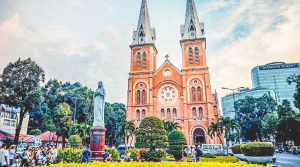French colonial architecture in Vietnam is a captivating testament to the country’s historical ties with France. The era of French colonial rule, spanning from the 19th to the mid-20th century, left a significant imprint on both Vietnam’s architectural landscape and well as modern day influences. From grand government buildings and charming churches to tasty Vietnamese cuisine and coffee.
Short history about the French colonial time in Vietnam
During the 19th and early 20th centuries, Vietnam was colonized by the French. This period of French colonial rule in Vietnam, known as French Indochina, lasted from the mid-1800s until the mid-20th century. Under French control, Vietnam was subjected to political, economic, and cultural domination. The French implemented infrastructure projects, introduced their language and legal system, and established a ruling elite. However, resistance to French rule grew, leading to nationalist movements and ultimately the struggle for independence.
Even today, the influences of the French colonial era can be seen in Vietnam, ranging from the delectable cuisine to the architectural remnants that grace the streets.
French colonial influences seen today
Religion
French missionaries played a significant role in spreading Catholicism during the French colonial period. In addition to the Vietnamese population, they made considerable efforts to convert ethnic groups in the Central Highlands, such as the Montagnards. Today, the legacy of these missionaries can be seen in the numerous churches and cathedrals found throughout Vietnam, with notable examples including the Notre-Dame Cathedral Basilica of Saigon in Ho Chi Minh City and the Hanoi Cathedral in Hanoi, serving as important religious and architectural landmarks.
Coffee Culture
The French introduced coffee cultivation in Vietnam in the late 19th century, and today, Vietnam is one of the world’s largest producers of coffee. Vietnamese coffee culture reflects French influences, with popular brewing methods like the French press and the use of condensed milk, creating a unique and rich flavor profile.
Cuisine
French culinary influences can be found in various Vietnamese dishes. In addition to Banh Mi, a fusion of French baguette and Vietnamese ingredients, other examples include Boeuf Bourguignon, a French-style beef stew with Vietnamese adaptations, and pâté, often enjoyed in banh mi or as a separate dish. The blending of French techniques and Vietnamese flavors has created a diverse and delectable culinary landscape.
Cyclos
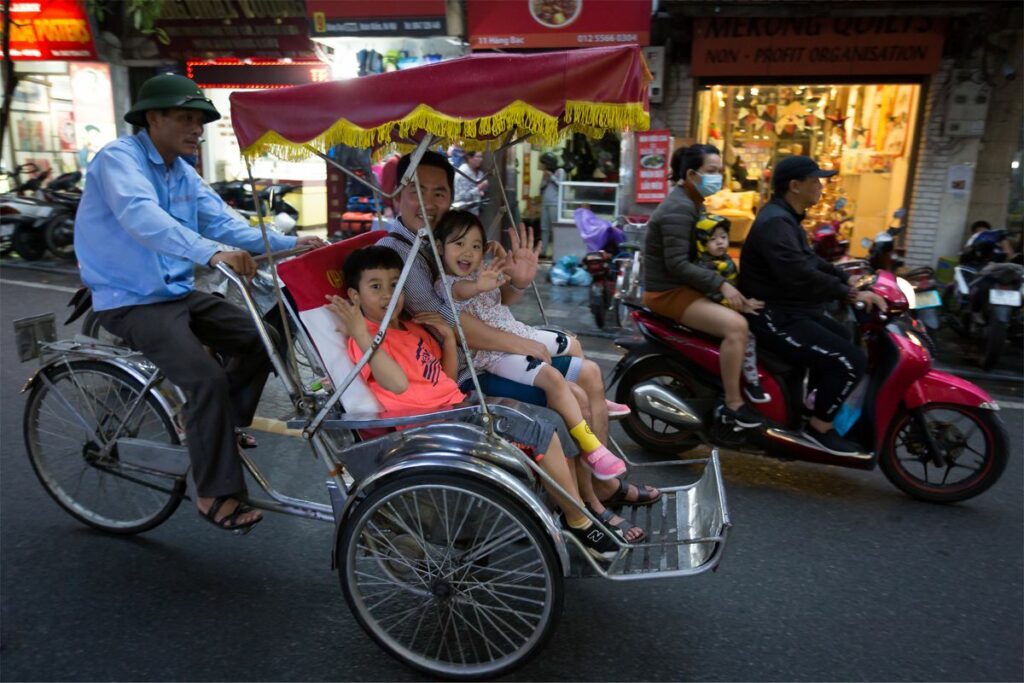
The cyclo, a pedal-powered tricycle with a passenger seat, was introduced by the French and was a common mode of transportation in Vietnam during the colonial era. While they have become less prevalent in recent years, cyclos can still be found in some tourist areas, providing with a nostalgic and leisurely way to explore the surroundings. A cyclo tour in Hanoi is one of the best ways to explore the city.
Architecture
French colonial architecture, with its elegant facades and ornate detailing, remains a prominent feature in Vietnam’s cities, serving as a reminder of its colonial past. For an overview of the best French colonial architecture sights that can still be visited today, check the list below.
Education
During the colonial era, French-style schools were established, introducing Western education methods and curriculum. The emphasis on education continued even after independence, with elements of the French system integrated into the Vietnamese education system, shaping the country’s approach to learning and academic institutions.
French colonial influences in education were driven not solely by a sense of egalitarianism but also by the necessity to train a larger number of clerks and assistants capable of handling the administrative tasks associated with colonial governance
17 best French colonial architecture sights
1. Hanoi Opera House
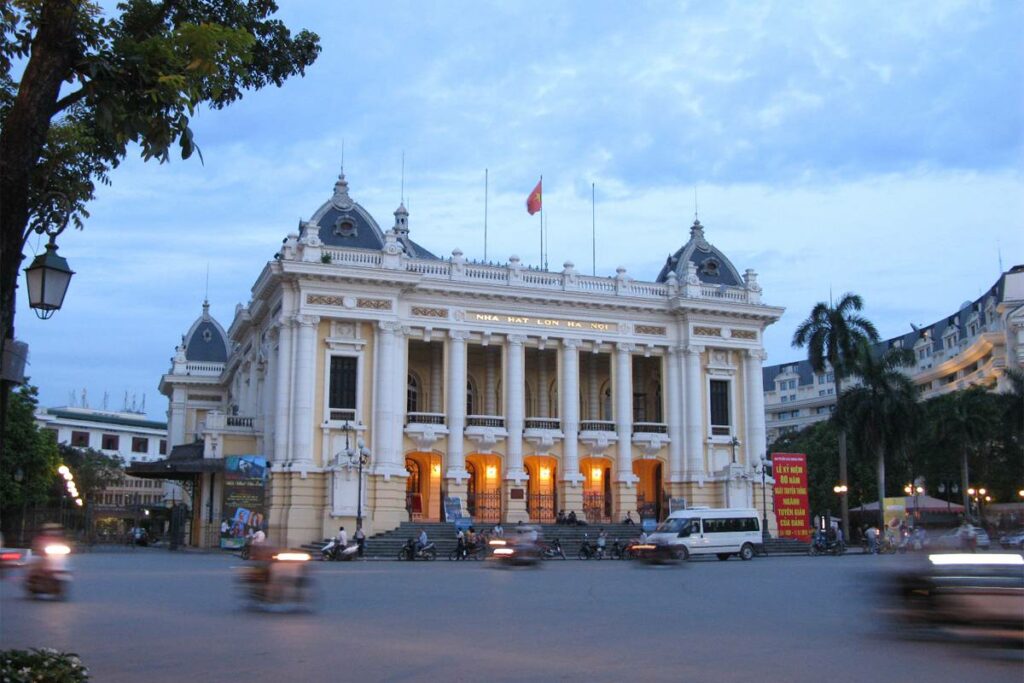
The Hanoi Opera House, a French architectural masterpiece in Hanoi, boasts neoclassical design and continues to be a prestigious venue for cultural performances and events.
2. Hoa Lo Prison

Once known as the “Hanoi Hilton,” Hoa Lo Prison is a stark reminder of Vietnam’s turbulent history, originally built by the French colonialists to detain political prisoners.
3. Long Bien Bridge

The iconic Long Bien Bridge in Hanoi, constructed by the French in the early 20th century, stands as a remarkable engineering feat and a symbol of Vietnam’s resilience.
4. Presidential Palace
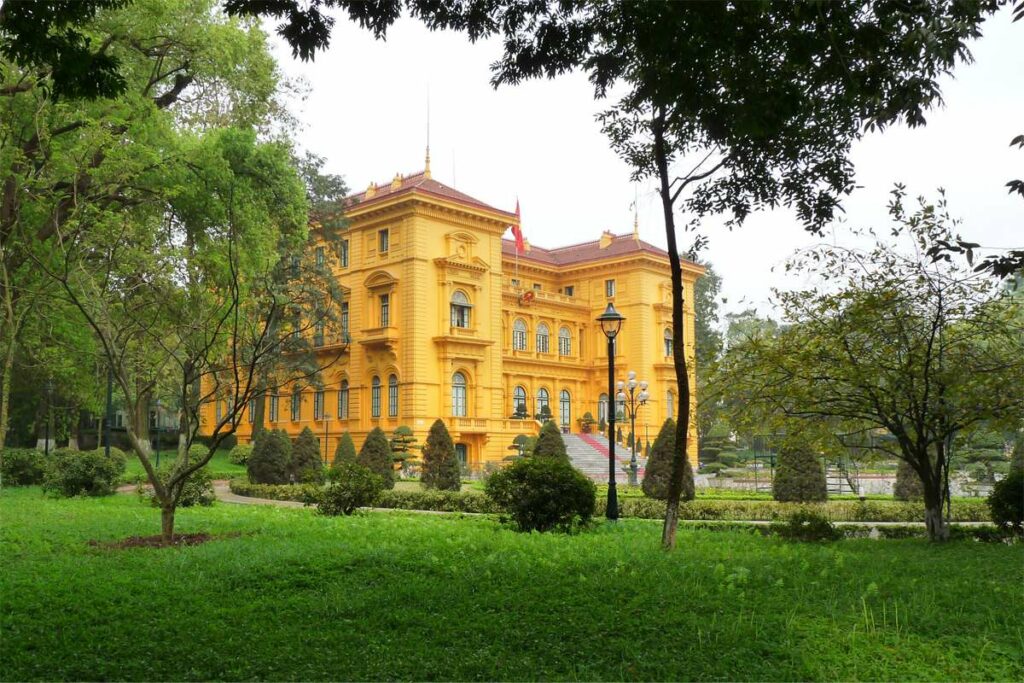
The Presidential Palace in Hanoi, built during French rule, served as the residence for French governors and later became the official residence of Vietnamese presidents.
5. St. Joseph Cathedral
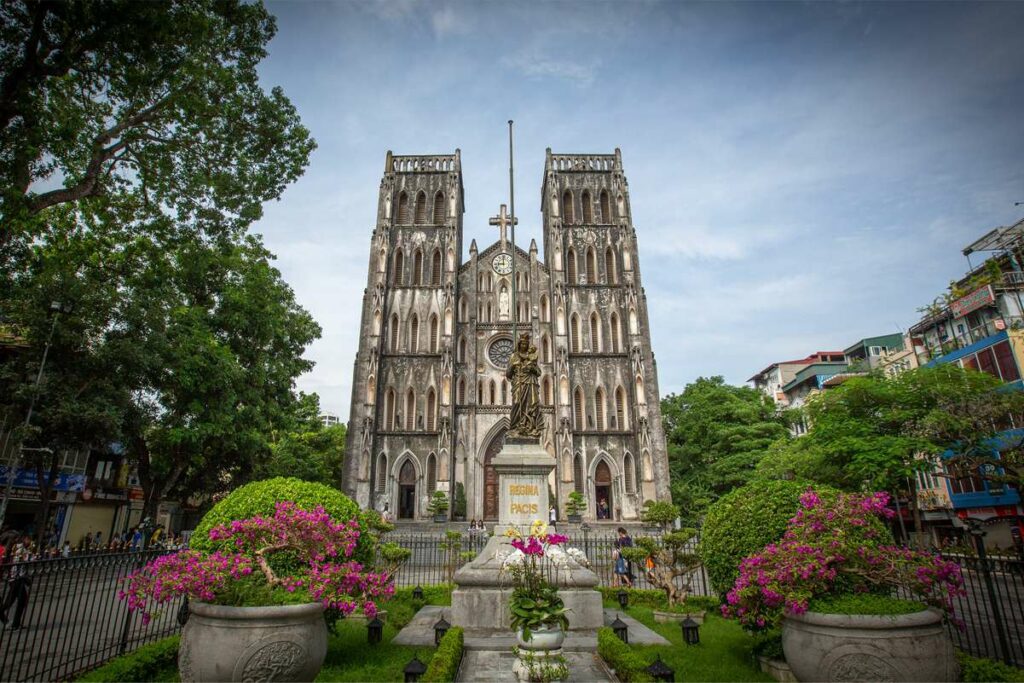
Located in Hanoi, the St. Joseph Cathedral is a stunning Gothic-style church constructed by the French in the late 19th century, offering a peaceful retreat in the heart of the city.
6. Notre Dame Cathedral

The Notre Dame Cathedral in Ho Chi Minh City, with its twin bell towers and intricate stained glass windows, is an iconic religious landmark built by the French in the 19th century.
7. Con Dao Prison
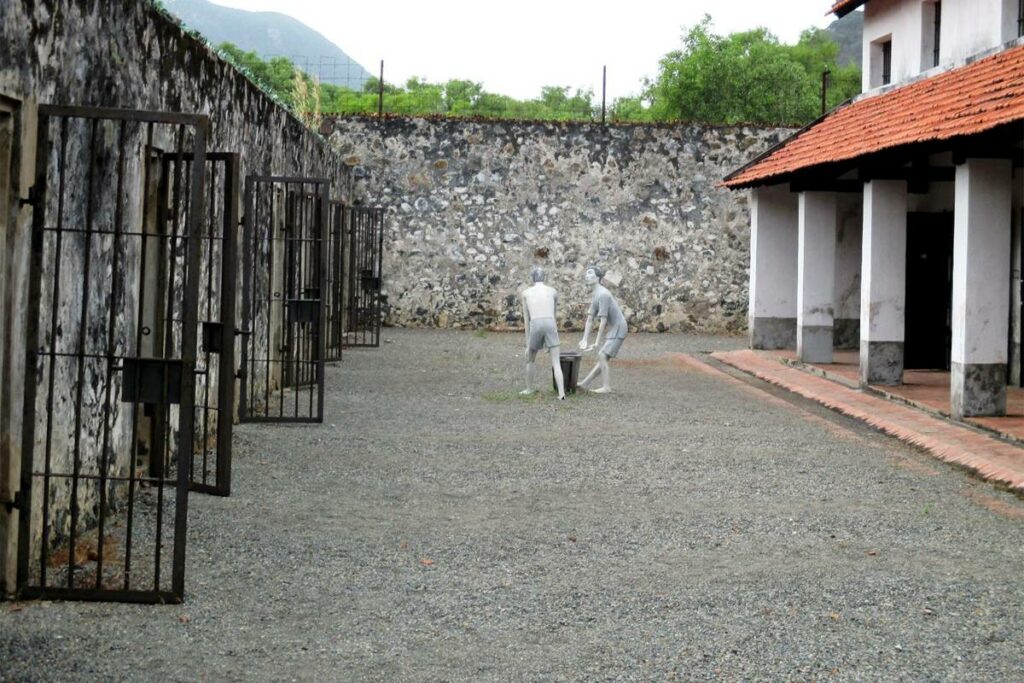
Con Dao Prison, a haunting relic of French colonial times, served as a brutal detention center where political prisoners were held under oppressive conditions.
8. Central Post Office
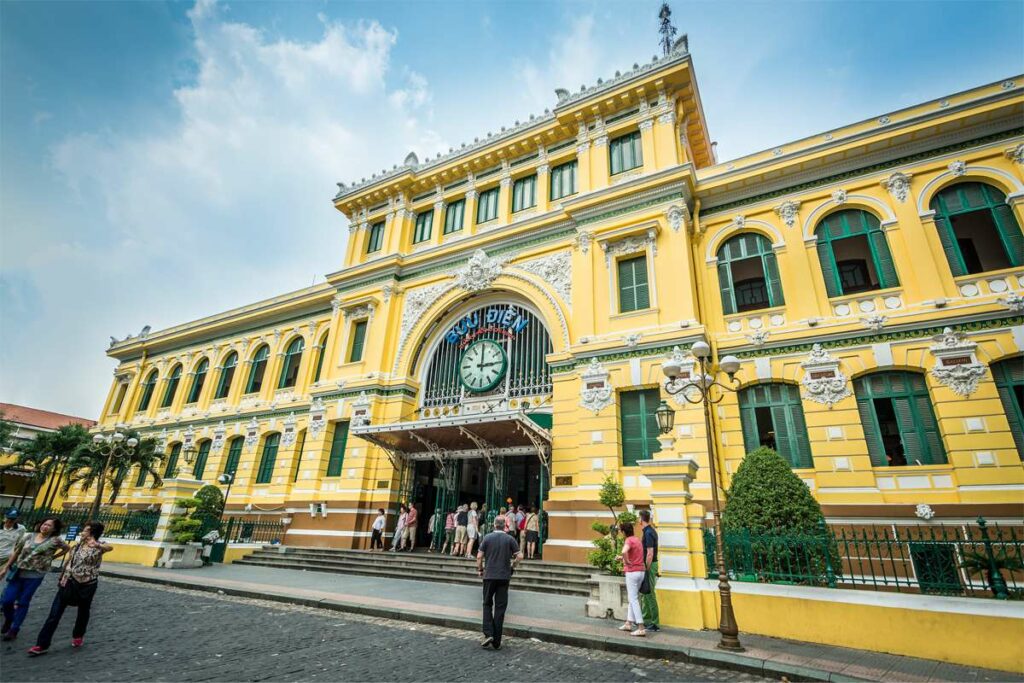
Designed by Gustave Eiffel, the Central Post Office in Ho Chi Minh City is a grand colonial-era building that combines Gothic, Renaissance, and French colonial architectural elements.
9. Saigon Opera House

The Saigon Opera House, also known as the Municipal Theatre, is an architectural gem in Ho Chi Minh City, constructed by the French in the late 19th century for cultural performances.
10. People’s Committee Building
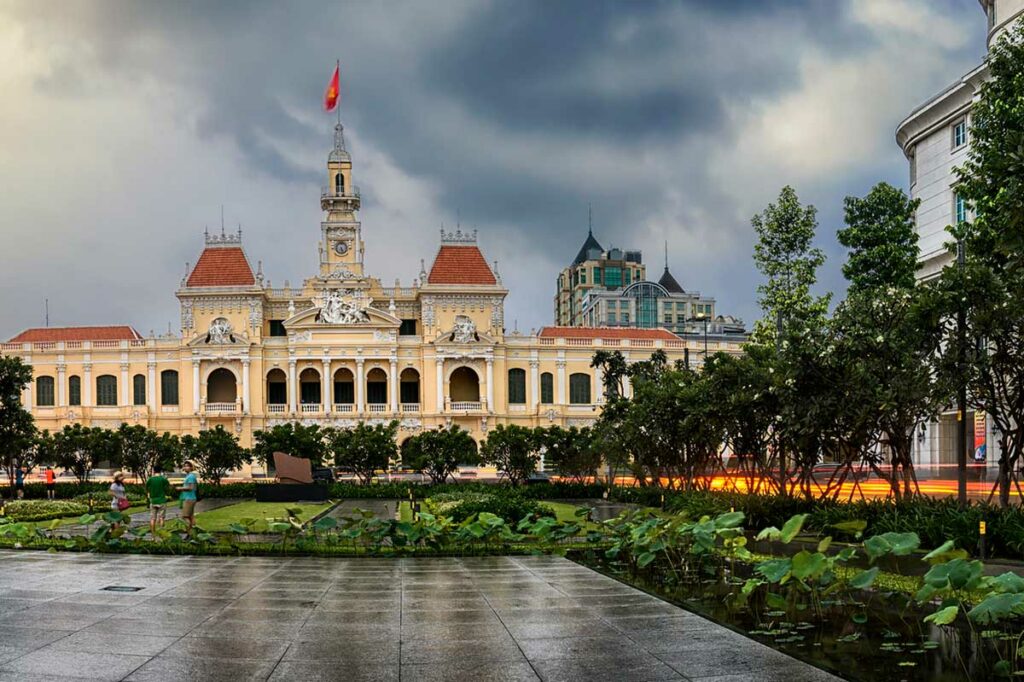
The People’s Committee Building in Ho Chi Minh City, previously the Hotel de Ville, is an imposing example of French colonial architecture and serves as the seat of the city’s government.
11. Reunification Palace
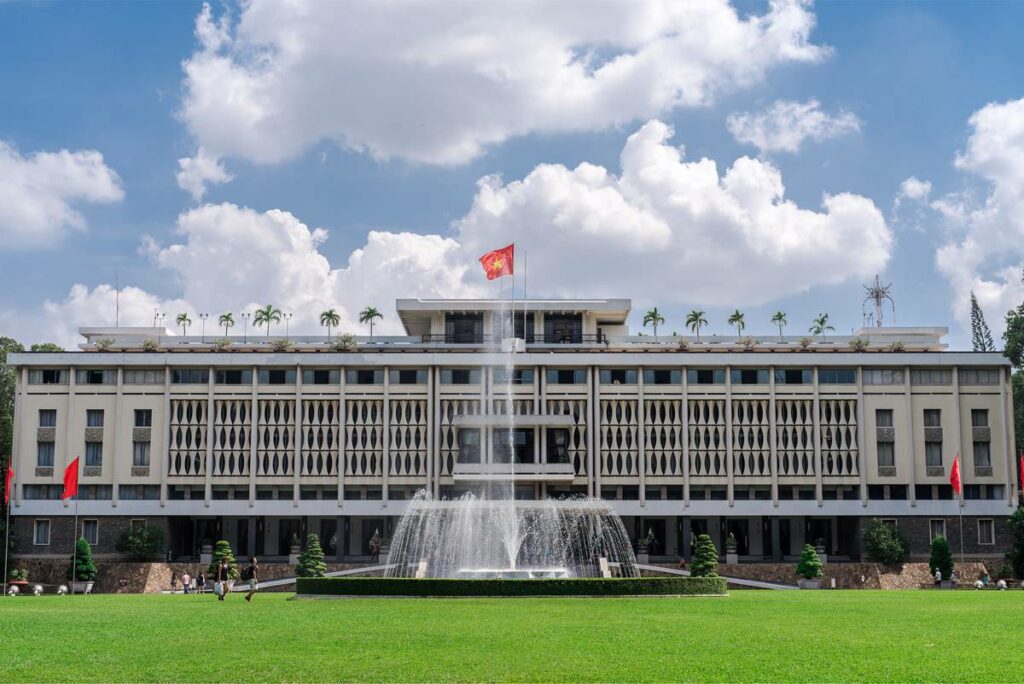
Formerly known as the Independence Palace, the Reunification Palace in Ho Chi Minh City played a pivotal role in Vietnam’s history and serves as a testament to French colonial architectural influence.
12. Hotel Continental Saigon
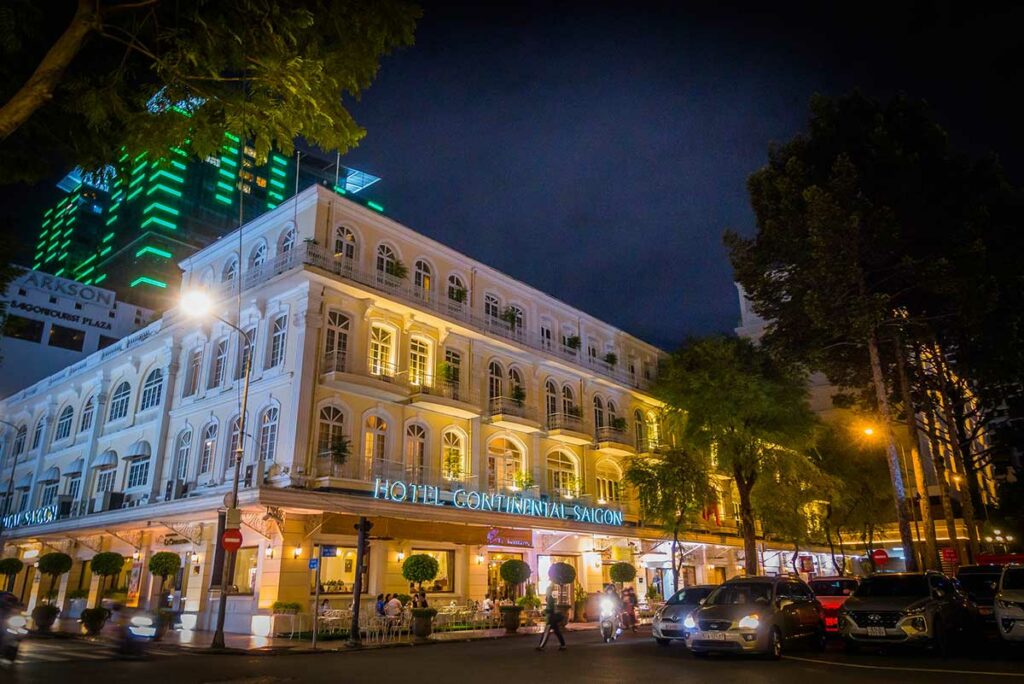
The Hotel Continental Saigon, established in the late 19th century, is a historic landmark in Ho Chi Minh City, renowned for its French colonial architecture and association with famous writers and journalists.
13. Ben Thanh Market
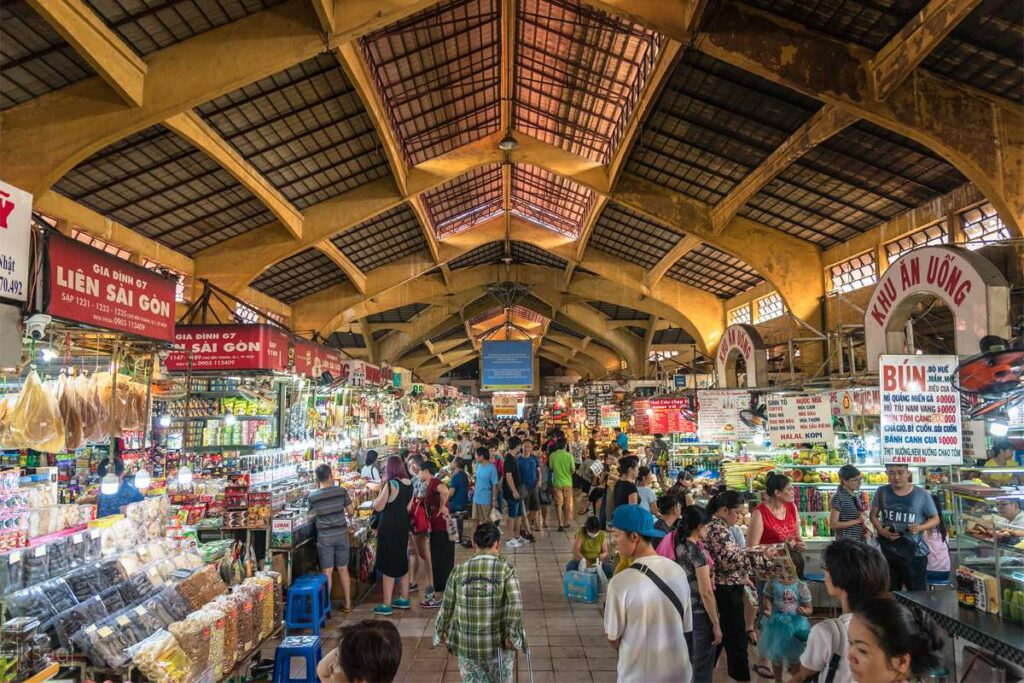
Located in Ho Chi Minh City, the vibrant Ben Thanh Market is a bustling marketplace featuring a mix of French colonial and Vietnamese architectural styles, offering an array of local goods and delicacies.
14. Hotel Majestic Saigon
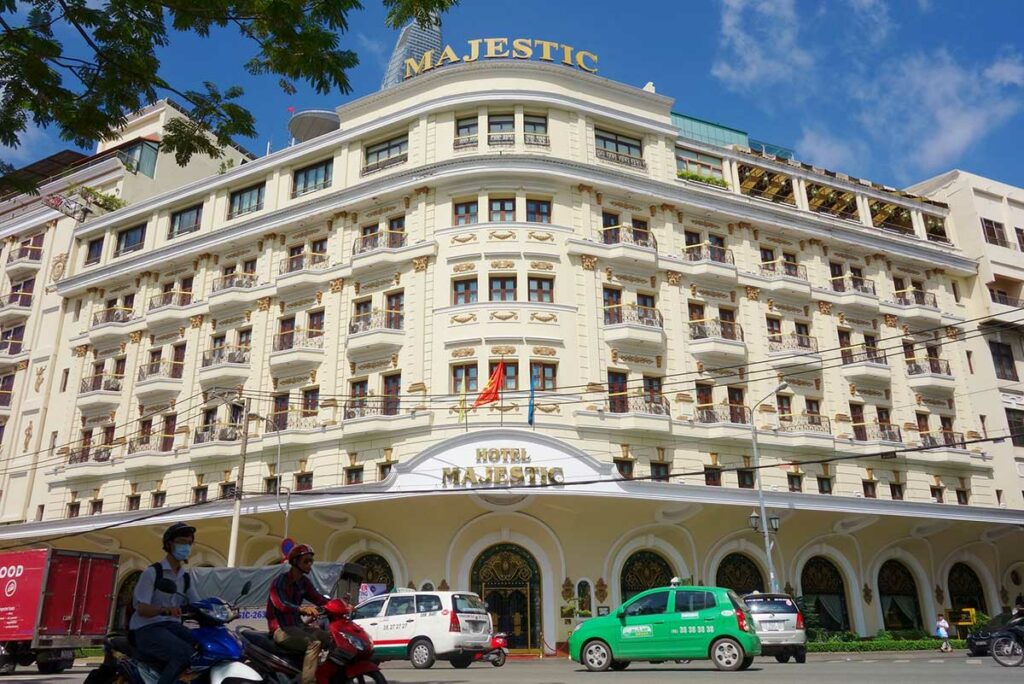
The Hotel Majestic Saigon, a luxurious French colonial-style hotel along the Saigon River, exudes old-world charm and provides guests with a glimpse into Vietnam’s colonial past.
15. Tan Dinh Church

Situated in Ho Chi Minh City, the Tan Dinh Church is a captivating pink-colored Catholic church built by the French in the early 20th century, blending Romanesque and Gothic architectural elements.
16. Kon Tum’s wooden church
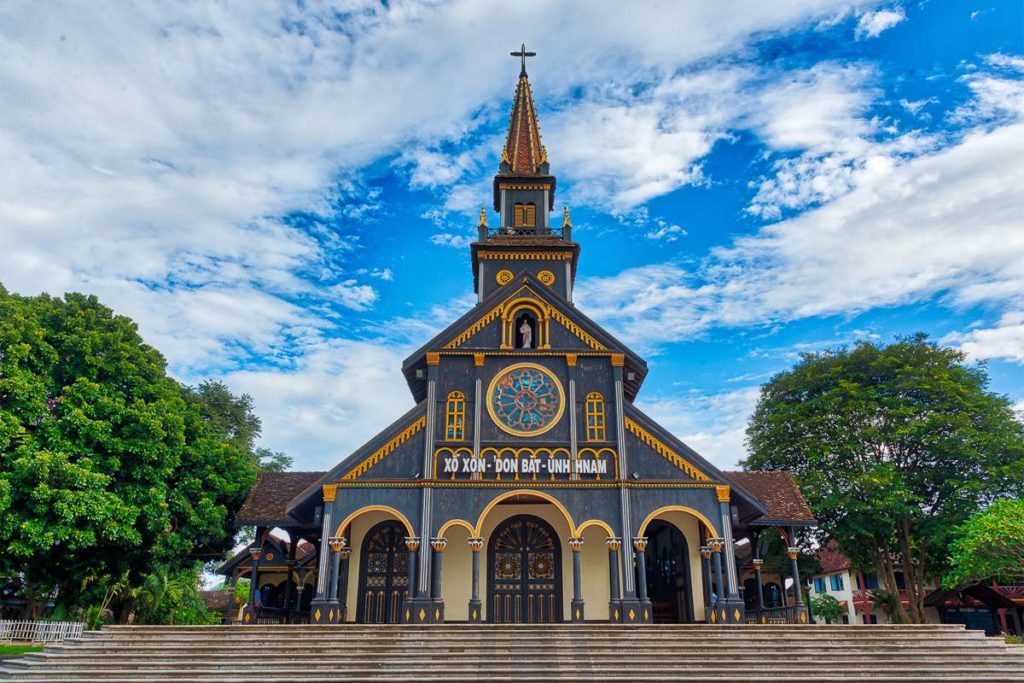
Kon Tum’s Wooden Church, officially known as the Kon Tum Cathedral, is a remarkable example of indigenous architectural adaptation during the French colonial era. Constructed entirely of wood and adorned with intricate carvings, the church stands as a cultural and historical icon, blending both Vietnamese and French influences.
17. Bishop’s House of Kontum
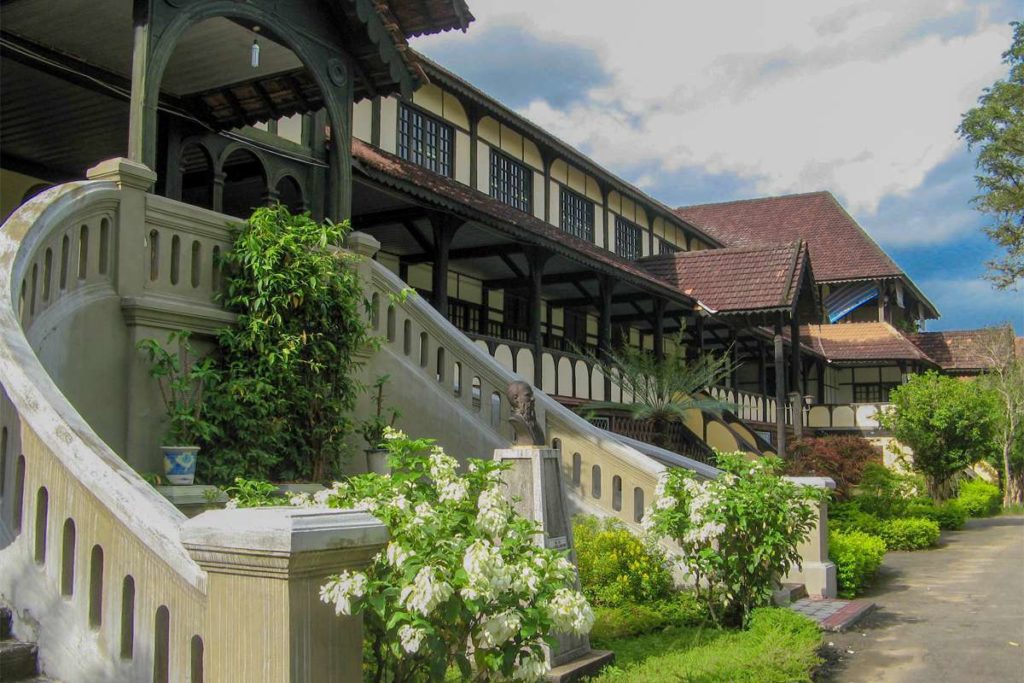
The Bishop’s House of Kontum was used as the residence for the French Catholic bishops during the colonial period in Kontum.

